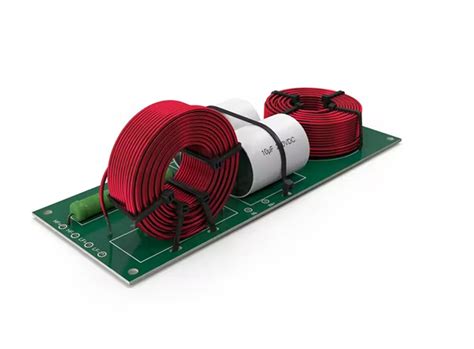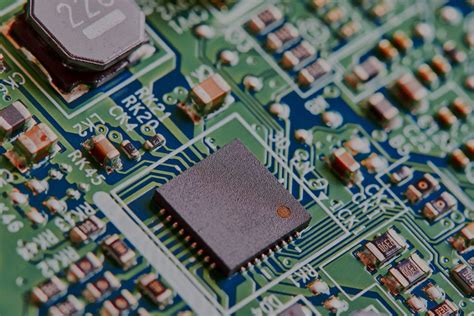Scaling Production: High Volume PCB Manufacturing Strategies
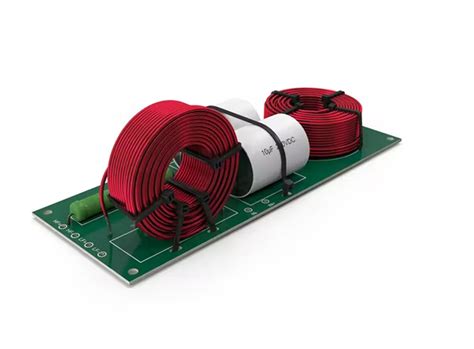
Key Takeaways
When scaling PCB manufacturing operations, understanding core benchmarks helps align expectations with production realities. You’ll need to prioritize automation for repeatable processes, negotiate material costs at scale, and implement rigorous quality checks. Leading PCB manufacturing companies focus on four pillars: throughput efficiency, defect prevention, supply chain agility, and lifecycle cost management.
For instance, bulk orders typically reduce PCB manufacturing cost by 18-35% through economies of scale, but only if you optimize panelization and material utilization. Consider these critical metrics when planning:
| Factor | Low-Volume (<500 units) | High-Volume (1000+ units) |
|---|---|---|
| Production Speed | 7-10 days | 4-6 days |
| Unit Cost Reduction | 5-12% | 18-35% |
| Defect Rate | 0.8-1.2% | <0.5% |
Your PCB manufacturing business must also balance supplier partnerships with contingency planning—dual sourcing critical components avoids bottlenecks. Tools like [automated optical inspection (https://www.andwinpcba.com) become indispensable for maintaining yield rates above 99% in large batches. Remember: prototyping isn’t optional. Validating designs before scaling prevents costly rework, ensuring your high-volume strategy aligns with technical and financial targets.
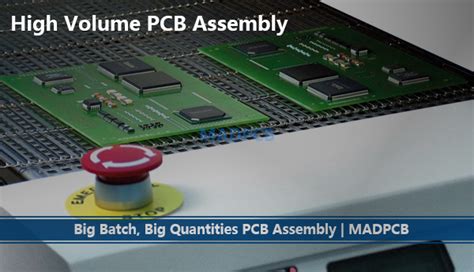
High Volume PCB Production Benchmarks
When scaling to high-volume PCB manufacturing, establishing clear benchmarks ensures your production aligns with industry standards while meeting cost and quality goals. Leading PCB manufacturing companies typically measure success through metrics like yield rates (percentage of defect-free boards), cycle times (from design to delivery), and defect density (flaws per unit area). For example, achieving a yield rate above 98% is critical for minimizing waste in PCB manufacturing cost calculations, especially when producing 1,000+ units.
Tip: Always request historical performance data from suppliers, including their average defect rates and turnaround times for bulk orders. This transparency helps avoid costly delays or quality compromises.
To maintain consistency, automated optical inspection (AOI) systems and electrical testing protocols are non-negotiables. These tools identify issues like solder bridging or trace misalignment early, reducing rework expenses. For PCB manufacturing business models targeting large-scale clients, adhering to IPC-6012 Class 2/3 standards ensures reliability in demanding applications.
Cost benchmarks also matter. While bulk pricing reduces per-unit PCB manufacturing cost, overordering can lead to excess inventory. Instead, balance volume discounts with just-in-time (JIT) strategies to align production with demand cycles. Pro tip: Partner with suppliers offering flexible minimum order quantities (MOQs) to adapt to market shifts without overcommitting.
By aligning your benchmarks with proven industry practices, you create a foundation for scalable, cost-effective PCB manufacturing that doesn’t sacrifice quality—a prerequisite for competing in high-volume electronics markets.

Automating PCB Assembly Scaling
When scaling PCB manufacturing operations, automation becomes the backbone of efficient production. Modern PCB manufacturing companies leverage robotic pick-and-place systems, automated optical inspection (AOI), and AI-driven assembly lines to handle thousands of boards daily without compromising precision. These technologies reduce human error while accelerating cycle times—critical for hitting high-volume targets. For instance, AOI systems scan every solder joint and component placement at speeds unachievable manually, ensuring defects are flagged before boards advance.
To optimize PCB manufacturing cost, integrate automated workflows early. While upfront investments in machinery may seem steep, they pay dividends through reduced labor expenses and minimized rework. A well-calibrated system can trim per-unit costs by 15–30% at scale. However, balancing automation with flexibility matters: modular setups allow quick adjustments for design changes or mixed-product batches.
When selecting partners for your PCB manufacturing business, prioritize facilities with proven automation capabilities. Ask about their machine uptime rates, real-time monitoring systems, and compatibility with your design files. Seamless data integration between your engineering team and their production line ensures zero-defect output even as order volumes spike. Remember, automation isn’t just about speed—it’s about building resilience into every step of your supply chain.
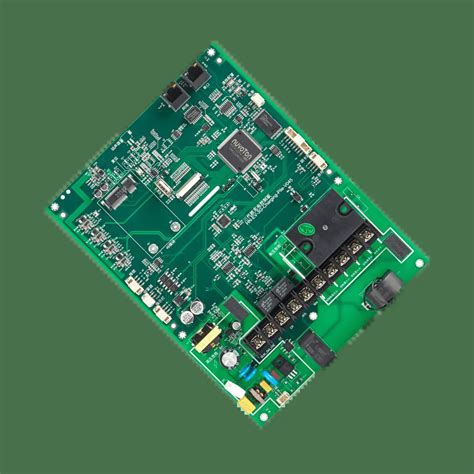
Bulk PCB Cost Optimization Strategies
When scaling to PCB manufacturing volumes exceeding 1,000 units, every cost variable multiplies. To maintain profitability, focus on design efficiency first—simplifying layer counts, standardizing hole sizes, and reducing unnecessary vias can lower PCB manufacturing costs by up to 18%. Partner with PCB manufacturing companies that offer tiered pricing models, as bulk orders often unlock volume discounts on materials like FR-4 substrates or high-frequency laminates.
Automated panelization is another key lever. By maximizing board layouts per panel, you reduce material waste and machine setup time—critical for high-volume runs. For instance, shifting from 2-up to 4-up panel designs can decrease PCB manufacturing business expenses by 12-15%. However, balance this with testing requirements; overly dense panels may increase defect risks.
Negotiate consignment agreements for raw materials like copper-clad laminates. Many suppliers offer preferential rates if you commit to quarterly purchase volumes. Additionally, adopt just-in-time inventory practices to minimize storage costs without disrupting production timelines.
Finally, leverage your PCB manufacturing partner’s expertise in Design for Manufacturability (DFM) analysis. Early identification of yield-limiting features—such as tight tolerances or complex solder mask patterns—prevents costly mid-production revisions. This collaborative approach ensures cost optimization aligns with quality benchmarks, preparing your operation for the next section’s focus on mass PCB quality control methods.
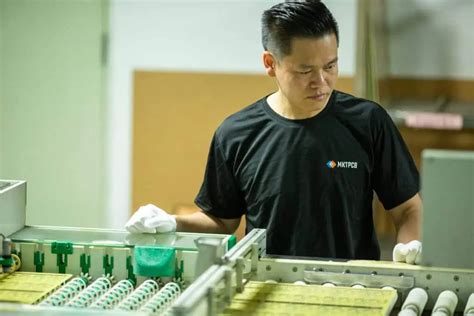
Mass PCB Quality Control Methods
Implementing rigorous quality control (QC) protocols becomes non-negotiable when scaling PCB manufacturing to high volumes. While automation accelerates production, defect rates can escalate exponentially without systematic checks. Start by integrating statistical process control (SPC) tools to monitor critical parameters like solder paste thickness and component placement accuracy in real time. For PCB manufacturing companies, this data-driven approach reduces rework costs and prevents batch failures.
Advanced inspection systems, such as automated optical inspection (AOI) and X-ray testing, are essential for identifying micro-defects in multilayer boards. Pair these with sampling strategies that align with ISO 9001 standards—testing 5-10% of units per batch, for example—to balance speed and reliability. Don’t overlook supply chain quality: audit material suppliers to ensure raw materials meet IPC-A-600 specifications, as inconsistencies in substrates or laminates directly impact PCB manufacturing cost and yield.
Finally, embed traceability systems to track defects back to specific production stages. This not only streamlines troubleshooting but also builds accountability with partners in your PCB manufacturing business. By prioritizing preventive measures over reactive fixes, you maintain consistency across 1,000+ unit orders while safeguarding brand reputation.
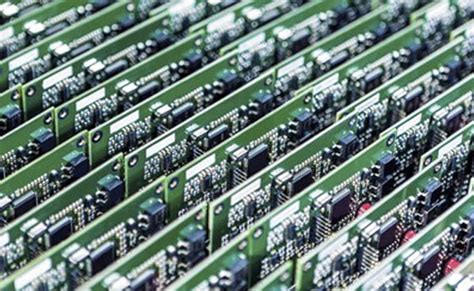
Streamlining PCB Supply Chain Networks
Efficient supply chain management becomes critical when scaling PCB manufacturing operations, as delays or bottlenecks can ripple through production timelines. Start by mapping your supplier network to identify dependencies—work closely with PCB manufacturing companies that offer flexible lead times and transparent communication channels. Consolidating material orders across multiple projects often reduces PCB manufacturing cost by leveraging bulk purchasing power, but balance this with inventory management strategies like just-in-time delivery to avoid overstocking.
For global operations, consider regionalizing your supply chain to mitigate geopolitical risks or logistics disruptions. Partner with distributors that provide real-time tracking and quality certifications, ensuring raw materials meet your PCB manufacturing business standards. Automated procurement platforms can further streamline ordering processes, while dual-sourcing critical components adds redundancy.
Proactive collaboration extends beyond suppliers: align with contract manufacturers early in design phases to optimize material usage and minimize waste. Regularly audit your supply chain’s environmental and ethical compliance, as sustainability increasingly impacts both costs and brand reputation. By treating your supply network as a strategic asset, you create resilience that supports scalable growth without compromising quality.
Choosing High-Volume PCB Partners
Selecting the right partner for PCB manufacturing at scale requires balancing technical expertise with operational reliability. When evaluating PCB manufacturing companies, prioritize those with proven experience in high-volume production (10,000+ units monthly) and certifications like ISO 9001 or IPC Class 3. Scalability is critical—ensure their facilities can handle sudden demand spikes without compromising lead times.
Analyze PCB manufacturing cost structures carefully. While competitive pricing matters, avoid partners offering unrealistically low quotes that might indicate shortcuts in material quality or testing processes. Instead, look for transparent pricing models that include volume discounts, tooling amortization, and clear terms for design revisions.
A strong PCB manufacturing business partner should demonstrate robust quality control systems, such as automated optical inspection (AOI) and X-ray verification, paired with traceability protocols. Verify their supply chain resilience by auditing component sourcing strategies—dual-sourcing for critical parts reduces production halts.
Finally, assess their communication frameworks. Partners providing real-time production dashboards and dedicated engineering support enable faster issue resolution, keeping your large-scale projects on track. By aligning these factors, you secure a collaboration that supports both current needs and future growth in electronics assembly.
Prototyping Before PCB Scaling
Before committing to high-volume PCB manufacturing, validating your design through rigorous prototyping is non-negotiable. Prototyping allows you to test functionality, identify design flaws, and refine material choices before scaling production—a critical step to avoid costly rework in PCB manufacturing business operations. Start by partnering with PCB manufacturing companies that offer rapid prototyping services, ensuring your design meets performance benchmarks under real-world conditions.
During this phase, analyze cost drivers like layer count, substrate quality, and component placement. For instance, a 4-layer board might function during prototyping but reveal signal integrity issues at scale, necessitating design adjustments. Stress-test prototypes for thermal management, solderability, and EMI compliance—factors that directly impact PCB manufacturing cost in bulk runs.
Transitioning from prototypes to mass production requires aligning your design with automated assembly processes. Use prototyping feedback to standardize component footprints or optimize panelization, reducing waste during scaling. By addressing these variables early, you mitigate risks and create a seamless bridge between small-batch validation and high-volume PCB manufacturing efficiency.
Future-Ready PCB Manufacturing
To stay competitive in evolving markets, PCB manufacturing must prioritize adaptability and innovation. Leading PCB manufacturing companies are integrating smart factory technologies—such as AI-driven process optimization and IoT-enabled equipment monitoring—to anticipate production bottlenecks and reduce downtime. These systems not only enhance precision but also refine PCB manufacturing cost structures by minimizing material waste and energy consumption. For your PCB manufacturing business, adopting modular production lines allows faster reconfiguration for new designs, critical when scaling to meet fluctuating demand.
Sustainability is equally vital. Forward-thinking manufacturers now leverage green chemistry in etching and plating processes, reducing environmental impact while complying with tightening regulations. Partnering with suppliers who offer recycled copper or halogen-free laminates ensures your supply chain aligns with global ESG standards. Additionally, investing in predictive maintenance tools extends machinery lifespan, lowering long-term capital expenditures.
As automation becomes ubiquitous, balancing human expertise with robotic efficiency remains key. Cross-training teams to manage advanced systems ensures seamless transitions during tech upgrades. By embedding flexibility and sustainability into every layer of operations, your PCB manufacturing strategy can withstand market shifts while delivering consistent quality at scale.
Conclusion
Successfully scaling PCB manufacturing operations to high volumes requires balancing technical precision with strategic business decisions. As you expand production beyond 1,000+ units, maintaining consistent quality while controlling PCB manufacturing costs becomes the critical equation driving profitability. Partnering with experienced PCB manufacturing companies that demonstrate robust quality control systems and flexible supply chain management can help mitigate risks inherent in large-scale operations.
Remember that optimizing your PCB manufacturing business isn’t just about throughput numbers – it’s about creating sustainable workflows that adapt to evolving component availability and market demands. The strategies discussed, from automated assembly protocols to supplier diversification, form an interconnected framework where each element reinforces production reliability. Before committing to full-scale production, validate your designs through rigorous prototyping phases and establish clear communication channels with manufacturing partners. This disciplined approach ensures your high-volume initiatives deliver both technical excellence and commercial viability in competitive electronics markets.
FAQs
What differentiates high-volume from low-volume PCB manufacturing?
High-volume PCB manufacturing focuses on economies of scale, leveraging automated processes and bulk material sourcing to reduce PCB manufacturing cost. Unlike low-volume runs, it requires specialized tooling and stricter quality protocols to maintain consistency across thousands of units.
How do you ensure quality control in bulk PCB production?
Leading PCB manufacturing companies implement automated optical inspection (AOI) and X-ray testing to detect defects. Statistical process control (SPC) systems monitor production in real time, ensuring compliance with industry standards like IPC-A-600.
Can you reduce costs without compromising quality?
Yes. Optimizing panel layouts, negotiating bulk material pricing, and partnering with experienced PCB manufacturing business providers help lower expenses. Advanced factories also minimize waste through precision machining and recycled material programs.
What should you prioritize when choosing a high-volume PCB partner?
Evaluate their supply chain resilience, technical certifications (e.g., ISO 9001), and scalability. Reliable PCB manufacturing companies offer transparent pricing, DFM feedback, and contingency plans for demand spikes.
Why is prototyping critical before scaling production?
Prototyping identifies design flaws early, preventing costly rework in mass production. It also validates manufacturability, ensuring your design aligns with the PCB manufacturing processes used for high-volume runs.
Ready to Scale Your PCB Production?
For expert guidance on high-volume PCB manufacturing, please click here to explore tailored solutions that balance cost, quality, and speed.

